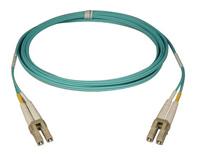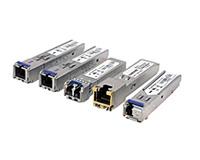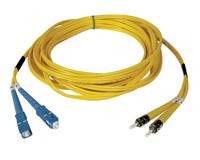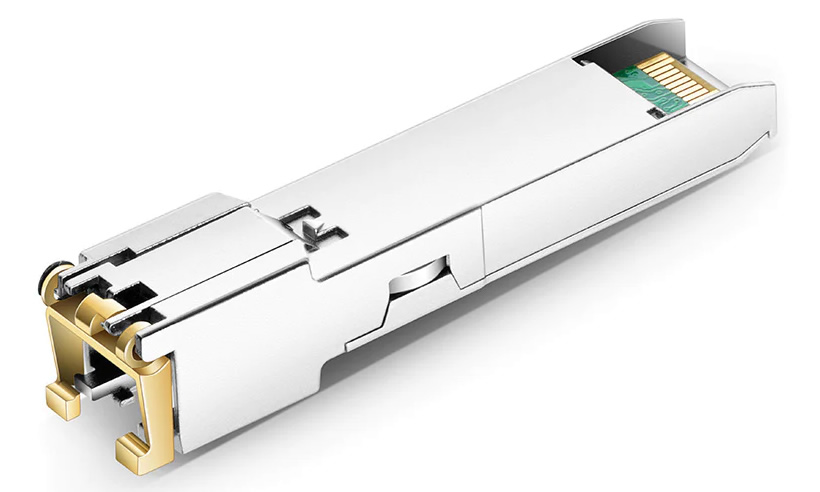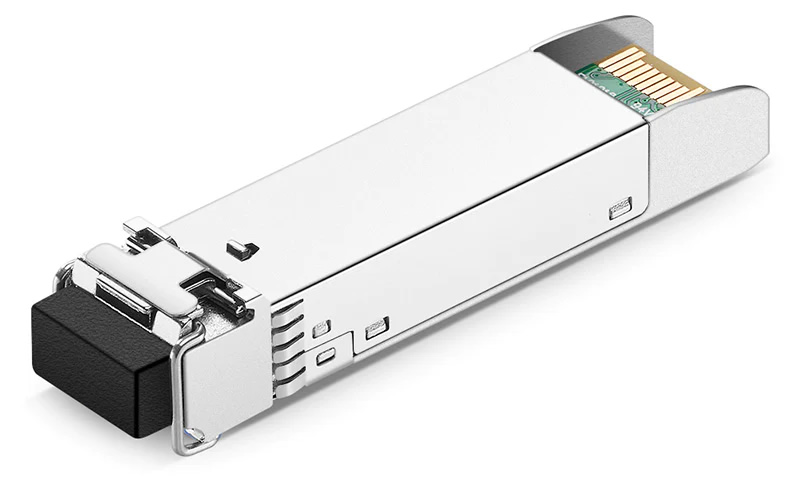Fiber Optic Link Cables
Sort by:
Name A - Z
-
AC-1G-SFP-C MXNet 1G SFP with Copper RJ-45 by AVPro Edge
This 1G SFP (Transceiver) allows users to connect a 1G copper link via RJ-45 from 1G MXNet switches such as AC-MXNET-SW24 and AC-MXNET-SW48 or for 1G MXNet endpoint extension with standard category cable up to 100mSKU: AC-1G-SFP-C
Brand: AVPro Edge -
AC-1G-SFP-MM MXNet 1G SFP with Multimode Fiber by AVPro Edge
This 1G SFP LC Multimode Module (Transceiver) allows users to connect a 1G fiber link from the AC-MXNET-SW24 to the AC-MXNET-SW10 or for endpoint extension with fiber.SKU: AC-1G-SFP-MM
Brand: AVPro Edge
Fiber Optic Link Cables
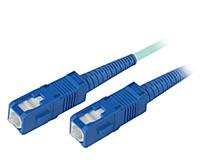 Fiber Optics is sending signals through hair-thin strands of plastic fiber or glass. The light is guided to the center called the core which is surrounded by cladding which traps the light. Fiber Optic link cables allow data transmission from points A to B via a data transmitter and possibly 1 or more fiber amplifiers to a receiver. There are two different types of fiber optic link cables, single mode fiber and multimode fiber. Single mode fiber optic cables allow one mode of light to propagate, which in turn lowers attenuation and the ability for the signal to travel further and faster. Multimode on the other hand has a larger core that allows multiple modes of light to enter which creates more light reflections. What this means is more data that can pass through; however the high dispersion and attenuation rate means the quality of the signal is lowered over long distances. Fiber optic link cables typically transmit digital signals and can be found in applications where DVI and HDMI signals are involved. If you have any specific questions or concerns about your application, give one of our agents a call so that we may assist you.
Fiber Optics is sending signals through hair-thin strands of plastic fiber or glass. The light is guided to the center called the core which is surrounded by cladding which traps the light. Fiber Optic link cables allow data transmission from points A to B via a data transmitter and possibly 1 or more fiber amplifiers to a receiver. There are two different types of fiber optic link cables, single mode fiber and multimode fiber. Single mode fiber optic cables allow one mode of light to propagate, which in turn lowers attenuation and the ability for the signal to travel further and faster. Multimode on the other hand has a larger core that allows multiple modes of light to enter which creates more light reflections. What this means is more data that can pass through; however the high dispersion and attenuation rate means the quality of the signal is lowered over long distances. Fiber optic link cables typically transmit digital signals and can be found in applications where DVI and HDMI signals are involved. If you have any specific questions or concerns about your application, give one of our agents a call so that we may assist you.

Fiber Optics is sending signals through hair-thin strands of plastic fiber or glass. The light is guided to the center called the core which is surrounded by cladding which traps the light. Fiber Optic link cables allow data transmission from points A to B via a data transmitter and possibly 1 or more fiber amplifiers to a receiver. There are two different types of fiber optic link cables, single mode fiber and multimode fiber. Single mode fiber optic cables allow one mode of light to propagate, which in turn lowers attenuation and the ability for the signal to travel further and faster. Multimode on the other hand has a larger core that allows multiple modes of light to enter which creates more light reflections. What this means is more data that can pass through; however the high dispersion and attenuation rate means the quality of the signal is lowered over long distances. Fiber optic link cables typically transmit digital signals and can be found in applications where DVI and HDMI signals are involved. If you have any specific questions or concerns about your application, give one of our agents a call so that we may assist you.


